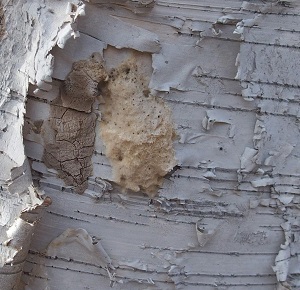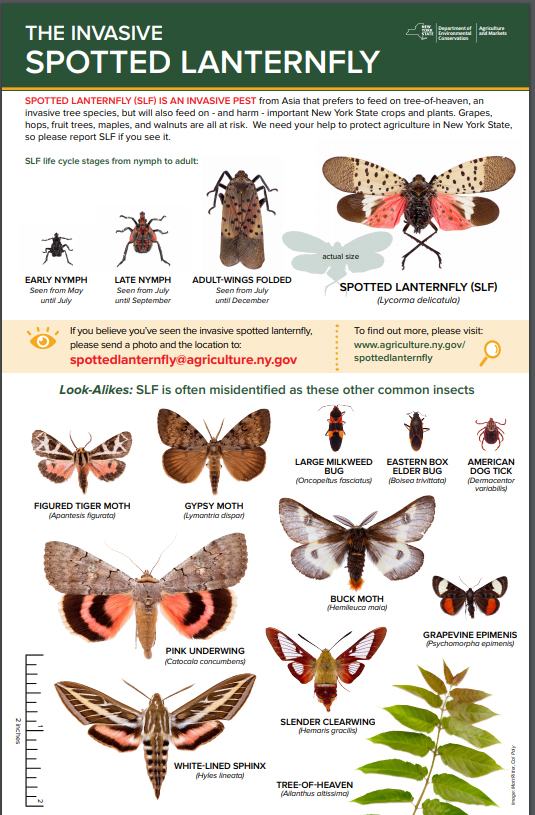The spotted lanternfly (SLF) is a pesky invasive pest that feeds on lots of important New York plants, such as apple trees and hops vines. With the recent finding of spotted lanternfly (SLF) on Staten Island, it’s never been more important for people to be on the lookout for this invasive insect. Since SLF spreads primarily through human activity, we really can make a difference.


A spotted lanternfly egg mass on the left, next to a gypsy moth egg mass on the right (Photo credit: Emelie Swackhamer, Penn State Extension)
When you’re keeping a watchful eye, know that SLF can be confused with other common insects you might spot flying around this fall. This time of year, the eastern boxelder bug or even gypsy moth eggs may catch your eye. The NYS DEC SLF poster is here to help, with photos of SLF as well as some common look-alikes.
The eastern boxelder bug has black and red markings similar to those of an invasive spotted lanternfly nymph, but the elongated body and red eyes of the eastern boxelder bug help set it apart from SLF. You might find eastern boxelder bugs lounging in sunny spots or even in your home but not to worry – unlike spotted lanternfly they’re harmless.
With high rates of gypsy moth infestation in New York this year, you’re more likely to see their eggs than SLF eggs but that doesn’t mean you shouldn’t be on the lookout. If you find an egg mass remember, spotted lanternfly eggs look a bit like mud that has dried and cracked. You can find SLF eggs just about anywhere including on firewood, trees, or even cars. Gypsy moth eggs, on the other hand, are lighter in color and fuzzy in texture. You’ll spot gypsy moth eggs on trees, firewood, or piles of rocks, but not on household items like SLF egg masses
Everyone can help protect New York?s agriculture by keeping an eye out for spotted lanternfly. Be sure to download the new NYS DEC’s SLF poster to help your friends and family know what to look for. If you believe you’ve seen the invasive spotted lanternfly, please send a photo and the location to spottedlanternfly@agriculture.ny.gov.


